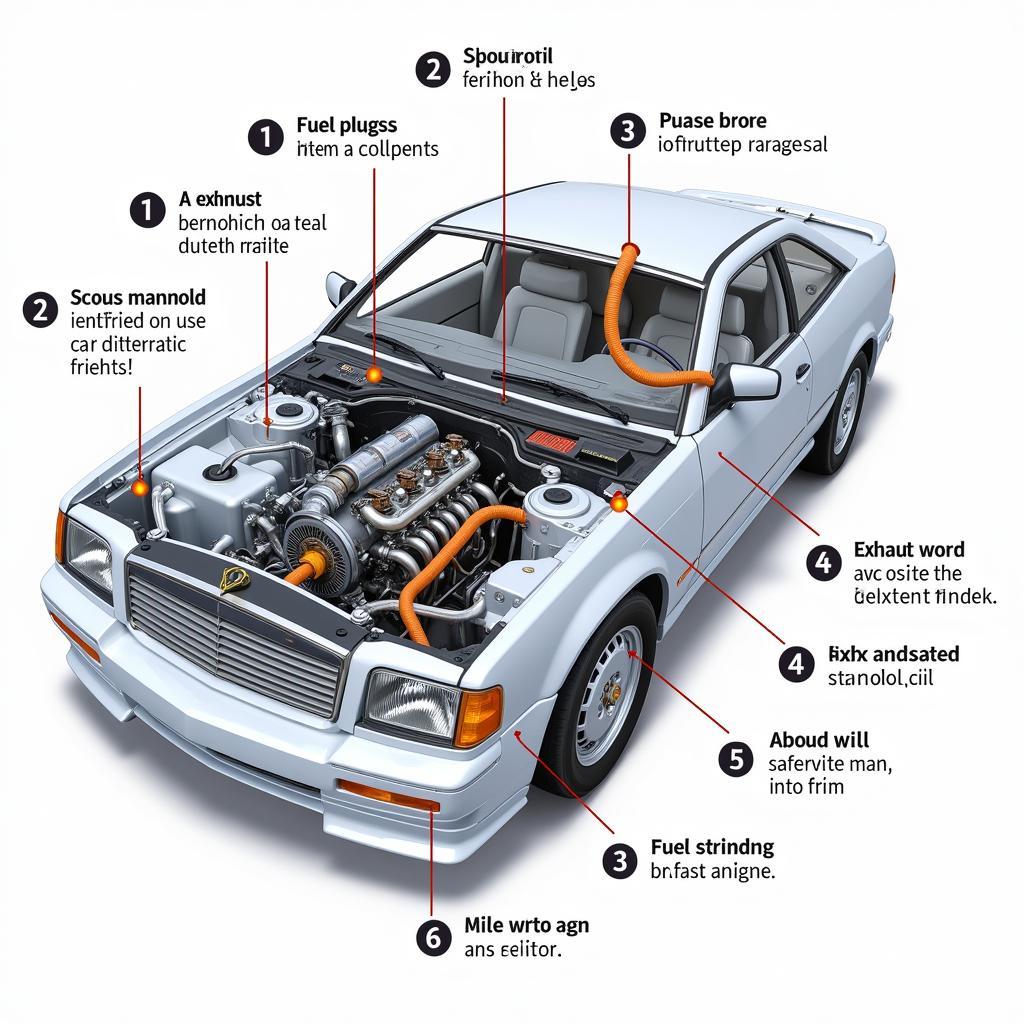Chipped car paint is a common problem, especially in colder climates. Fixing chipped car paint below 50 degrees Fahrenheit presents unique challenges, but it can be done with the right approach. This article will guide you through the process of repairing minor paint chips in cooler temperatures, ensuring a professional-looking finish even when the weather isn’t ideal.
Understanding the Challenges of Cold Weather Car Paint Repair
Cold temperatures affect the way paint dries and cures. Below 50 degrees, paint can become thicker and more difficult to apply smoothly. Drying time is significantly increased, and the risk of runs and sags is higher. Also, the cold can make the paint more brittle, leading to cracking or further chipping if not handled carefully.
Preparing Your Car for Chipped Paint Repair in Cold Weather
Proper preparation is crucial for a successful repair. First, thoroughly clean the chipped area with soap and water, then dry it completely. Use a wax and grease remover to ensure proper adhesion of the touch-up paint. If there’s any rust, remove it with a fine-grit sandpaper. Masking tape around the chipped area will protect the surrounding paint.
Choosing the Right Paint and Tools for Cold Weather Application
When working in colder temperatures, opt for touch-up paint specifically designed for low-temperature application. These paints are formulated to dry and cure properly even in less-than-ideal conditions. You’ll also need a fine-tipped brush or a touch-up pen for precise application. A small container of rubbing compound and polishing compound will be necessary for the finishing touches.
How to Apply Touch-Up Paint Below 50 Degrees
Apply the touch-up paint in thin, even coats, allowing each coat to dry completely before applying the next. Patience is key here. Avoid applying thick coats, as this will increase the drying time and the likelihood of imperfections. If you’re working in extremely cold conditions, consider using a portable heat lamp to create a warmer environment for the paint to dry.
How can I prevent runs and sags when applying touch-up paint in the cold?
Apply very thin coats and allow ample drying time between each coat. A heat lamp can also help prevent runs and sags.
Finishing Touches and Protecting Your Repair
Once the paint is fully cured (which may take longer in cold weather), use fine-grit sandpaper to carefully level any imperfections. Follow this with rubbing compound and then polishing compound to blend the repair seamlessly with the surrounding paint. Finally, apply a coat of wax to the repaired area for added protection.
Conclusion
Fixing chipped car paint below 50 degrees requires patience and attention to detail, but it’s definitely achievable. By following these steps and using the right products, you can maintain your car’s appearance and protect it from further damage even during the colder months. For professional assistance or further guidance, connect with us at AutoTipPro at +1 (641) 206-8880. Our office is located at 500 N St Mary’s St, San Antonio, TX 78205, United States. We’re here to help you keep your car looking its best!
“Addressing paint chips promptly, even in cold weather, prevents rust and preserves the car’s value,” says automotive expert, Michael Carter, certified mechanic and owner of Carter’s Auto Repair.
“Using the correct paint and technique for cold weather application ensures a durable and seamless repair,” adds Susan Miller, lead paint technician at Miller’s Auto Body Shop. Don’t let cold weather stop you from taking care of those pesky paint chips!
FAQ:
- Can I use regular touch-up paint below 50 degrees? It’s not recommended, as it may not dry or cure properly.
- How long does touch-up paint take to dry in cold weather? It can take significantly longer than in warmer temperatures, sometimes several hours or even overnight.
- What should I do if the paint cracks after drying? Lightly sand the cracked area and reapply a thin coat of touch-up paint.
- Do I need a heat lamp to fix chipped car paint below 50 degrees? It’s highly recommended, especially in very cold conditions.
- Can I wash my car after repairing a paint chip in cold weather? Wait at least 24 hours after the final coat of paint has dried before washing your car.
- What if the chip is larger than a dime? For larger chips, it’s best to consult a professional auto body shop.
- What type of sandpaper should I use for smoothing the repaired area? Use a very fine-grit sandpaper (2000-grit or higher).





Leave a Reply